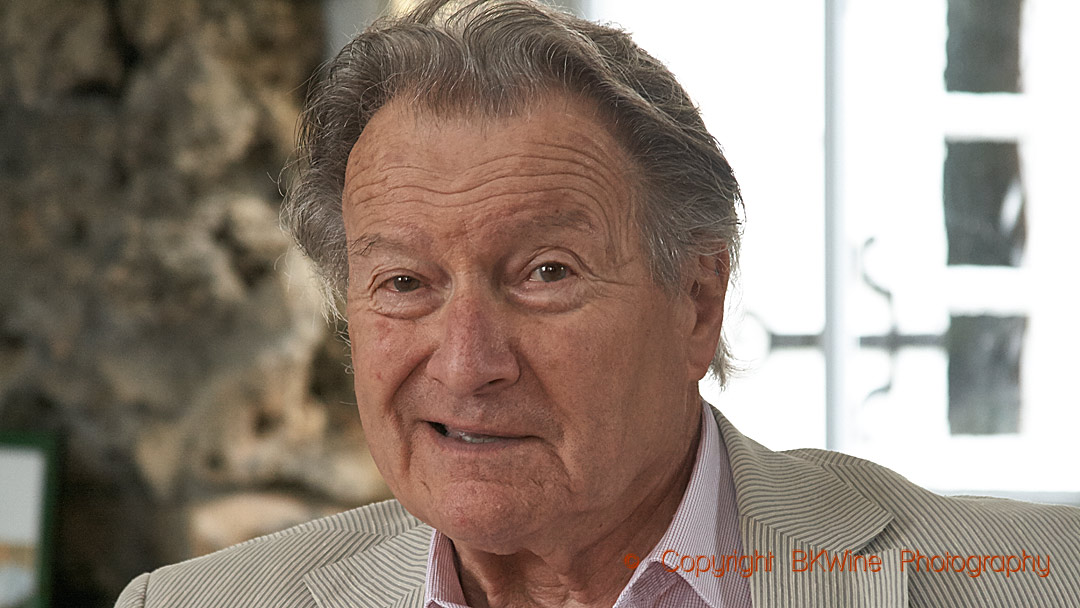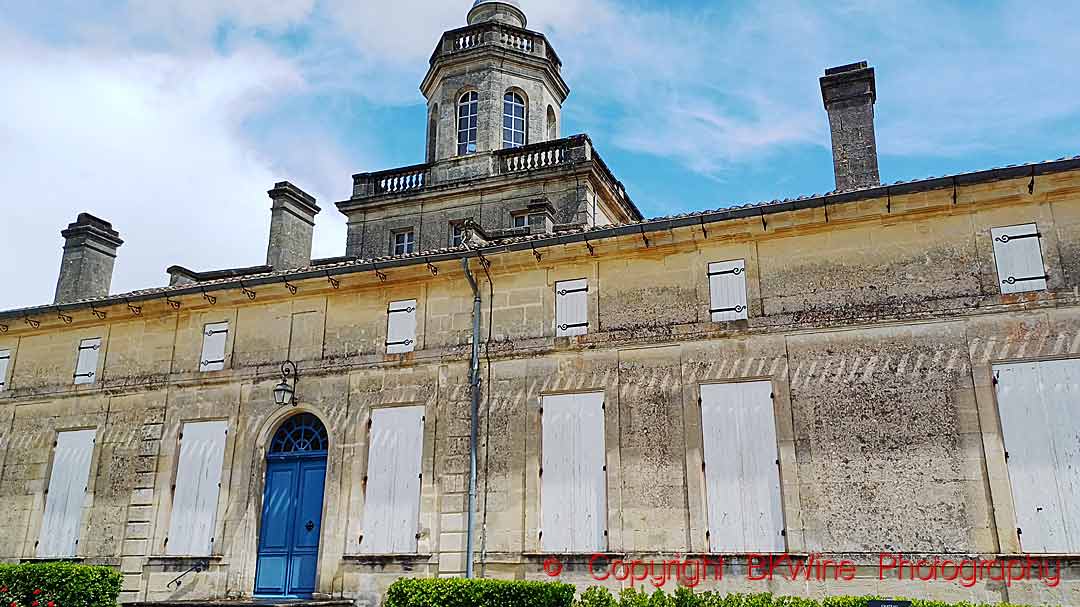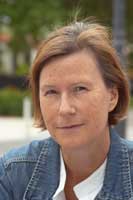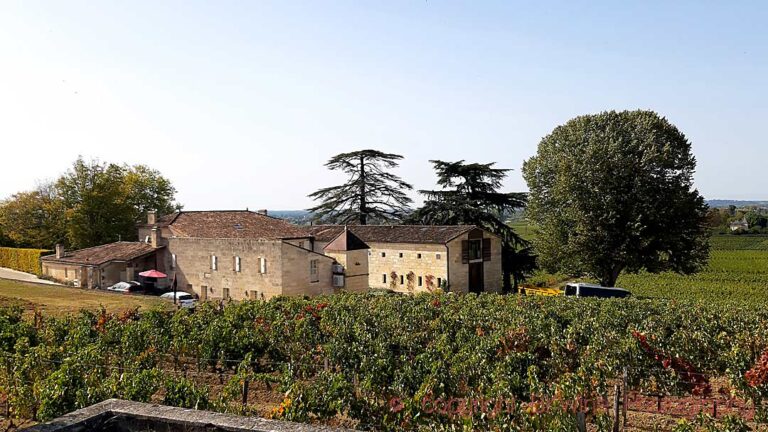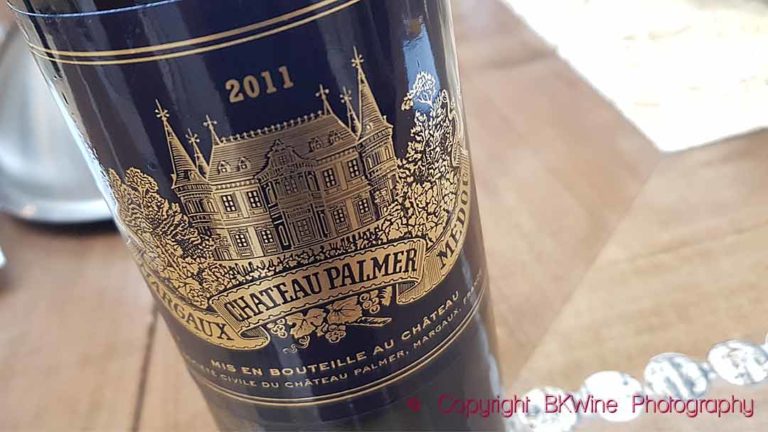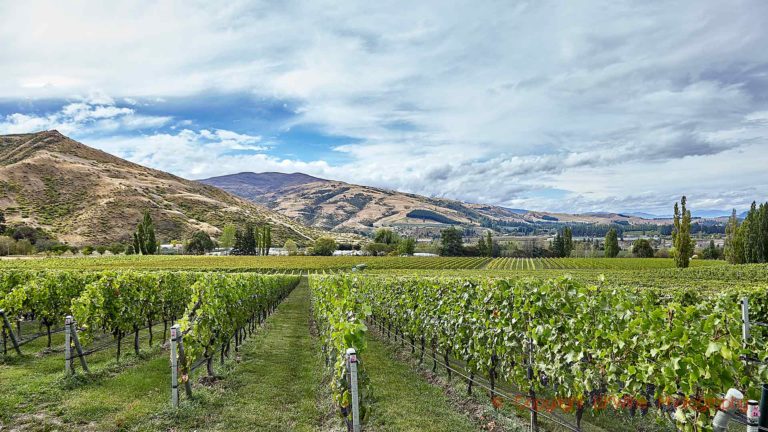How does it feel to move back to Bordeaux after several decades as a winemaker in the New World? Jaques Lurton knows. When his father, André Lurton, a legend, passed away, Jaques left his vineyard in Australia. He moved back to Bordeaux and took over responsibility for Vignobles André Lurton. And, of course, his fingers itch to modernise and change. He is the true son of his father. André was an innovator.
Lurton is a familiar name in Bordeaux. Most of the Lurtons you come across here are children of either Lucien Lurton or André Lurton, two brothers who left their mark on Bordeaux as a wine region during their long lives (they lived to well over 90). Jacques Lurton is the son of André, who passed away in 2019. Jacques then moved back to Bordeaux after 25 years in Australia and even longer as a winemaker in various countries around the world. A case of New World meets Old World.
I recently met Jacques at Château Bonnet, the château where André Lurton was born and lived his entire life. There is a lot of Lurton history here. We talked about the past and the present and, not least, the need to be ready for changes in Bordeaux.
In 2019, Jacques took over responsibility for Vignobles André Lurton. It is an extensive heritage that includes the 200-hectare Château Bonnet in Entre-deux-Mers, four châteaux in Pessac-Léognan and Château Barbe Blanche in Lussac-Saint Emilion. But Vignobles André Lurton is not just these châteaux. It is also the mark that André has left on Bordeaux. “My father was a visionary,” says Jaques. “He had a modern way of thinking and understood consumers.” Today, Bordeaux definitely needs the courage to think non-traditionally. Jacques is the perfect person to continue André’s work. By his side is his niece, Mathilde Caix-Lurton, who has been CEO since 2022.
Wine consultant for vineyards worldwide
Jacques graduated as an oenologist in Bordeaux in 1983. Not long after, he went to Australia and discovered techniques and a way of thinking that did not exist in Bordeaux. In 1985, he returned to Bordeaux with many good ideas and helped bring the family’s wines into the spotlight.
He and his brother François founded Société JFL in 1988. It started as a consultancy, but in the 1990s, Jacques became a partner in several vineyards in the south of France, Spain, Portugal, and South America. He travelled the world, made his own wines and, as a sought-after consultant, helped others make wine. He discovered his passion for white wines. In 2006, he and François went their separate ways. Jacques continued as a consultant but devoted himself primarily to his vineyard, The Islander Estate on Kangaroo Island in South Australia, which he bought in 2000.
Château Bonnet, Entre-deux-Mers
In 2019, he returned to Bordeaux, and he is back at Château Bonnet, the largest in terms of surface area of the Lurton châteaux and the château where André Lurton lived his life and where Jacques grew up.
It was André’s grandfather, Léonce Récape, who bought Château Bonnet in the village of Grézillac in Entre-deux-Mers in 1897. The château and the estate were in poor condition, but Léonce saw the potential. He replanted, carefully choosing which vines to plant. In 1902, he built a new cellar. He kept up to date with the latest technology for the vineyards and vinification.
André inherited the château in 1953. Times were difficult then, and the severe frost of 1956, which hit the vines in Bordeaux hard, caused many estates to go bankrupt. But André kept Bonnet afloat and gradually expanded the area from 50 hectares in 1953 to more than 300 hectares in the 1990s. During these years, he also went “château hunting” in Graves, on the other side of the Garonne River. Between 1964 and 1977, he bought four châteaux in Graves: Château Rochemorin, Château Cruzeau, Château Cohins-Lurton and Château la Louvière. After extensive renovation and replanting, La Louvière became the jewel of his portfolio.
But André always felt most at home at Bonnet. And so does Jacques. The château is Jacques’ workplace now; no one lives here anymore. In addition to the nostalgia of being back at the château where he grew up, there are also other reasons why he likes being in Entre-deux-Mers. He likes the atmosphere and the people.
“The people are fantastic here,” he says, “they are farmers, they can grow things, they grew up with that, they have chickens at home, they watch the weather. Very different from how it is in Pessac-Léognan!”
“When I took over 4 ½ years ago, I wanted to recreate the atmosphere of a living farm that once existed,” Jacques says. “We took out the vines in front of the château, planted an orchard, installed beehives, and set up a chicken coop. I want to create an environmentally friendly way of living and working. The employees bring their food waste here for the compost, and we have eggs for the employees – but we also sell – we grow vegetables and have pasture for sheep. All winter, we have 300 sheep in our vineyard and serve cheese from these sheep when we have dinners. We have an employed gardener who takes care of all this.”
“My father made his living from the wines of Château Bonnet,” he continues. André created the red Château Bonnet Réserve in the 1970s, which was a great success. It is a classic Bordeaux, says Jacques, oak-aged, quite powerful with tannins, but relatively smooth ones. “The wine has to have some tannin, and we always get it here; we have a cool soil that retains freshness.”
He wants to continue making a classic style of wine but with more fruit. “I always talk about fruit,” he says, “I brought that with me from the New World. Nobody in Bordeaux was interested in it before.” He accepts some oak ageing but not so much that it masks the fruit.
“We will reduce the oak ageing a bit for Bonnet Réserve, modernise it a little, make it more ‘drinkable.’ And the word réserve has an old-fashioned sound today, so we’ll change that too.”
In today’s Bordeaux, you need to be open to changes. Many of the lesser-known chateaux have a hard time staying afloat. “The Chinese used to buy cheaper wines, and this was a profitable time for many châteaux,” says Jacques. But now, they have almost stopped buying. Jacques hopes that introducing red Entre-deux-Mers will help some of these châteaux distinguish themselves.
Château Bonnet is located in the Entre-deux-Mers region, but the appellation has only applied to white wines (the reds in the same area became AOC Bordeaux). However, from the 2023 vintage, it also applies to red wines. “The idea is that the Entre-deux-Mers wines should be more ambitious than the AOC Bordeaux, with stricter rules, and in this way differ from the vast ocean of Bordeaux wines that exist,” says Jacques. “We want the red Entre-deux-Mers to replace Bordeaux Supérieur, which is honestly a stupid name; André never liked it. The wines are not better because it says supérieur on the label.”
Entre-deux-Mers Rouge 2023 from Bonnet will be bottled soon, around March/April. When I tasted it, it was still in tank. “The fruit is important here, and a certain softness; I learned that in the New World, that’s what people want without sacrificing a certain structure and mouthfeel,” says Jacques. “The structure is important, but it must be drinkable.”
Another red wine that is well worth mentioning is Divinus de Château Bonnet. It is the château’s top cuvée that is only made in excellent years. Divinus, André, and now Jacques wanted to show that even a modest appellation can make great wines. The wine is made with 80% merlot but in a blind tasting, you can easily place it on the left bank, according to Jaques. I tasted 2018 with a delicious, full-bodied, and dense character with an excellent mouthfeel and smooth tannins. Also for Divinus Jacques is reducing the oak ageing.
White Bordeaux wines are delicious
Early in his career, Jaques discovered that he loved making white wines. So, it is fitting that all his four châteaux in Pessac-Léognan make white wines and that more than half of the production at Château Bonnet is white. 118 hectares of the château’s current 200 hectares are planted with white grapes.
Hopefully, more people will soon realise how delicious white Bordeaux wines are. I remember when I met André Lurton in 2015. He said, “Nobody talks about the white wines; Bordeaux has not yet exploited its potential.” It still seems to be true. “Yes,” says Jacques, “we must fight to make the white wines known.”
André Lurton was one of those who, in the 1970s and 1980s, began to change the white Bordeaux wines that had long had a bad reputation. “They were simple, sweet wines at the time with too much sulphur,” says Jacques. André modernised the wines and created the Entre-deux-Mers appellation with strict rules. It was a new style and taste when he first launched the white Château Bonnet with its clean, fresh, and aromatic character.
Now Jacques is looking for a good mouthfeel in his white wines. Château Bonnet Blanc (AOC Entre-deux-Mers) gets its mouthfeel and fatness from sémillon, and 30% of the grapes are harvested slightly overripe. The wine also spends a few months on its lees in the tank (sur lie). “It’s a very interesting wine,” says Jacques, “and we’ve had great success with it in Sweden. It’s been in the regular range at Systembolaget (the Swedish Monopoly shops) for at least 40 years.”
“Sweden is an important country for us”, says Mathilde Caix-Lurton, “we also sell a lot in restaurants. But it isn’t easy with Systembolaget; you get delisted quickly when sales dip. The problem with constant new launches means that people forget about the regular range.”
Recently, the rules were changed, and an Entre-deux-Mers wine must now have at least two grape varieties. “It makes a difference,” says Jacques. “Otherwise, everyone would just make simple sauvignon blanc wines. It’s important to have body in the wine.”
He wants to get away from the sauvignon blanc dominance. He believes that sémillon will once again become a significant grape variety in Bordeaux. “Sémillon is good for restaurants,” he says, “it goes with food, it has body and texture. It becomes more complex with age. It gets better and better and gets superb aromas over time, apricots, peaches…. It is a good wine without being opulent.”
However, he emphasises the fact that sémillon needs to have low yields. It can be very productive; if you let it, it will not be an interesting wine.
He makes an excellent 100% sémillon in the “Diane by Jacques Lurton” series. Emphasising the winemaker’s name is a concept he borrowed from the New World. Another exciting wine in the same series is Diane by Jacques Lurton Blanc de Noirs Méthode Traditionelle. It is something as unusual as bubbles from 100% cabernet sauvignon.
Changes for the future
André was creative and not afraid to change things. In his old age, he put screw caps on his wines. Jacques is following in his footsteps. The bottle weight has decreased, and the white Château Bonnet now weighs 410 grams and is considered a lightweight bottle. He has also bottled Château Bonnet in PET bottles for two test markets, Sweden and Australia. It is currently not available anywhere else. Bordeaux in a plastic bottle? For most people, it would be unthinkable. “You have to be curious and flexible,” says Jacques.
André was also among the first to adopt HVE 3 (Haute Valeur Environnemental, a French sustainability label). “We were also among the first”, says Jacques, “to be certified RSE (La responsabilité sociétale des entreprises) which also emphasizes the social aspect. “We want to be globally sustainable and consider the entire production chain. We care about details, such as water meters. Bordeaux may have diseases in the vineyard, but we don’t irrigate, which is sustainable in itself…”
What does Jacques drink when he is not drinking Bordeaux wine? He loves riesling, chenin blanc, mâcon… “I like a slightly more modest chardonnay, a bit less powerful. I like modesty in everything, also in wine.”
The whole portfolio of wines of Vignobles Andre Lurton gives you pleasant, delicious Bordeaux wines, both white and red, at prices you can actually afford.
Some examples:
- Château Bonnet Blanc, 2023, Entre-Deux-Mers, ~8 euro
- Château Bonnet Réserve Blanc, 2020, Entre-Deux-Mers, 12 euro
- Diane by Jacques Lurton, Blanc de Noirs Brut Nature, ~20 euro
- Château de Rochemorin Blanc, 2020, Pessac-Léognan, ~22 euro
- Château Bonnet Rouge, 2021, Bordeaux, PET-flaska, ~12 euro
- Château Bonnet Reserve 2019, Bordeaux, ~14 euro
- Divinus de Château Bonnet 2018, Bordeaux, ~25 euro



